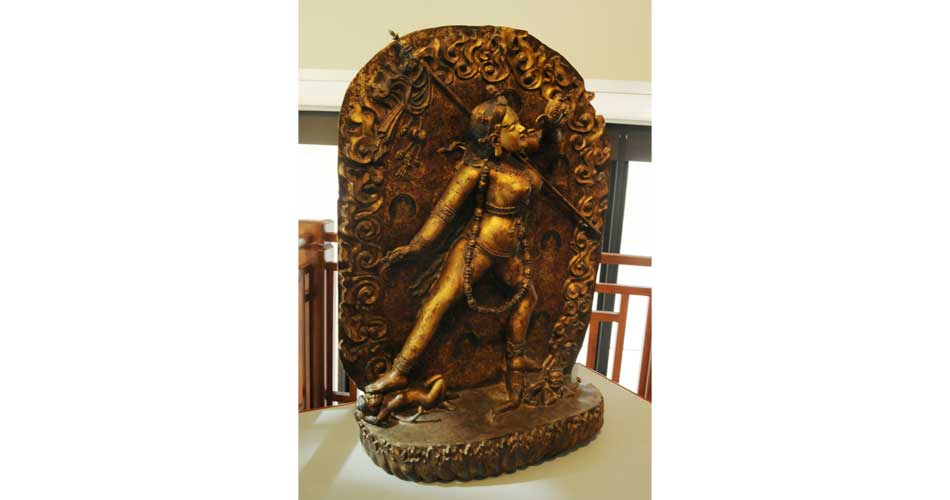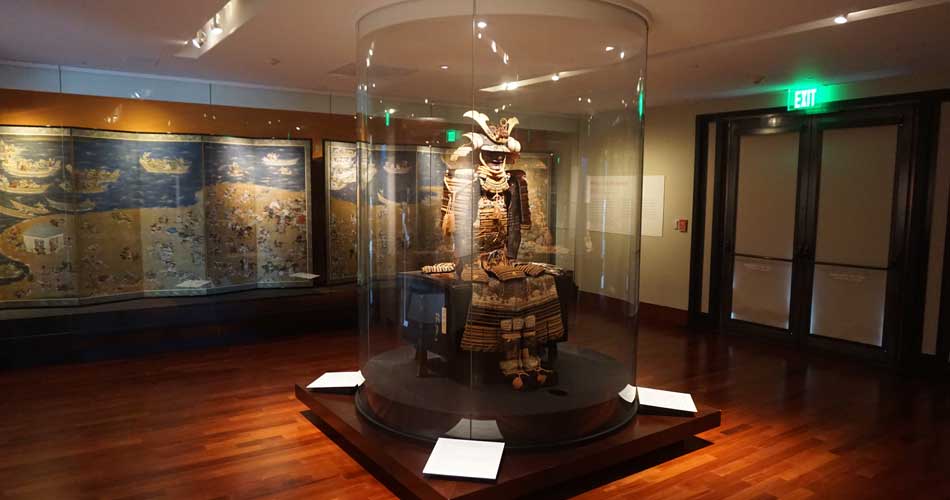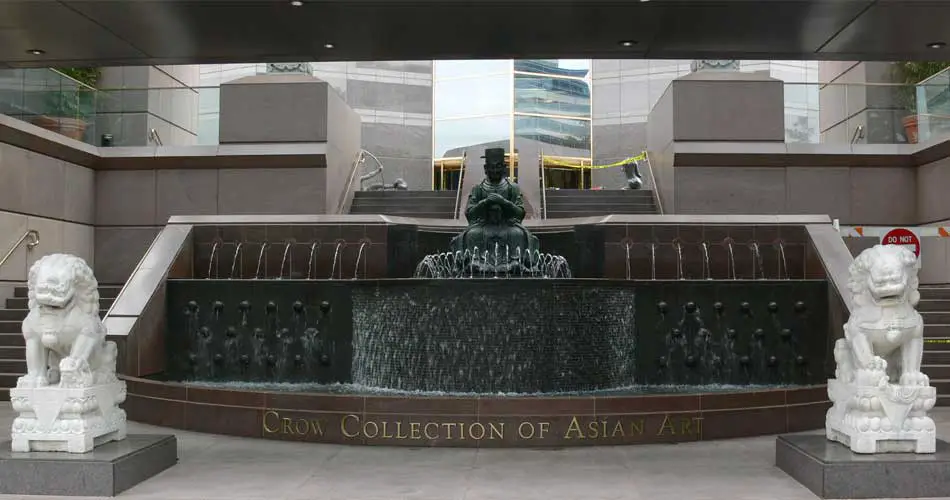The Asian art museum Dallas follows CDC and other public health officials for its smooth operation throughout 2021 with social distancing rules in effect. Help to keep the safety of the staff, visitors, and guests in consideration the Asian art museum is run in a safe and welcoming environment.
The museum opens from Tuesday to Sunday at 11 am and closes at 5 pm and remains closed on Monday. The unvaccinated visitors are requested to wear masks and in case of forgetting the masks, they can claim one at the entrance.
The Trammell and Margaret Crow Collection of Asian Art was opened in December 1998 by Mr & Mrs Crow at 2010Flora street in Dallas Texas. The free museum was opened to share their love of Asian art &culture with the general public. The collection consists of pieces from China, Japan, India, Korea, and Southeastern Asia from historical to contemporary arts & artefacts.
The Asian art museum has included three new exhibitions. Divine Spark, Born of fire and VISHNU.
Table of Contents
Divine Spark at the Asian Art Museum Dallas
These are the art made by Asian women artists. This exhibition features the Dallas-based artists’ Kana Harada’s work. This was made during the global pandemic and blends the message of hope and positivity with the innovative visuals that guide the explorers to dive into their; imagination and wonder. Harad’s creation of push sculpture, foam, acrylic, watercolor painting reaches a new height in her practice. She expresses how light can be found in the dark.
Born of Fire
Born of fire is the art consisting of ceramic. It features ceramic arts of Japanese women who have a very negligible role in the history of clay arts. These remarkable artists are helping reflect change occurring in contemporary Japanese art society creating new and advanced ceramic aesthetics.
VISHNU
This exhibition focuses on Vishnu, one of the most powerful Hindu gods. The deity has many faces and personalities. He flies down from heaven on a half man and half eagle known as Garuda. Vishnu carries a chakra, the mace, a lotus flower, and a conch shell. According to time and place, his visual representation can be different.
The Asian art museum consists of three galleries. In Gallery-I Japanese art or traveling- exhibitions are kept on display. Gallery-II is on the second floor. All the Chinese artifacts are displayed on the second floor and so are the mezzanine. The Jade collection is one fine pillar of Crow Collection Traditional Chinese Jade Industry’s Qing dynasty snuff bottles are displayed as well.
The Qing Dynasty was the last dynasty of China. It was established in 1636 and the dynasty ruled China from 1944 to 1972. After the Ming Dynasty preceded the Qing dynasty it was succeeded by the Republic of China. The Qing Dynasty used snuff bottles to contain powdered tobacco. The snuff bottles were typically made of glass and many other materials like wood, coconut shell, pearl, etc. It was mainly palm-sized with a very small spoon for extracting tobacco.
Nasher Sculpture Centre was opened in 2003, in Dallas Texas. It lies in between Gallery-II and Gallery-III. Trammell Crow Centre with The Seated Daoist Deity fountain. Gallery-III comprises the Mugal wall, arts from Southeast Asia, India.

Some of the spectacular artifacts in the Galleries are:
Tang dynasty horse from the 8th century
A Tang dynasty horse is a figure created during ancient China in the Tang dynasty.
These are the tomb figures that were specifically designed to be buried with the deceased. The tomb figure was created by very high-level craftsmen/artists. The harness of the horse is green in color and is very distinctly in contrast to the brown color of the horse’s body. It easily allures the eyes of the viewers.
The horse is supposed to indicate a handsome adult with a smooth, neat, and aesthetic body. According to ancient Chinese belief, tomb artifacts were to be used by one of two souls of a deceased named PO. After the hun soul the PO soul alone and required a tomb figure for its care in the afterlife.
1672 Ink and pigment on silk from Qing Dynasty, Kangxi period
The Kangxi period lasted for 61 years. It is the longest-reigning period according to the ancient history of China. The Crow Collection has a world-famous painting known as 1672 Ink and pigment on silk by Wang. With no affiliation from any school of painting, Wang specialized in bird-and-flower painting. He was brilliant and used a minute style.
China, Qing Dynasty,18th-century glass
18th-century glass holds a very special place in the Crow Collection. The glasses and their artifacts were made without the use of modern technology. They are no less than any other glass artifacts made in this technical era. The Qing Dynasty was a great supporter of the production of glass.
Small pieces of minerals and plant ash were crushed and were then heated at a fairly low temperature roughly at 750-degree celsius until they formed a ball. The ball was thoroughly molded into different shapes and sizes and forms. They were used for decoration purposes. Other functional glasses like windows and optical glasses were later discovered.
West India, Rajasthan, Mughal Period, 18th-century sandstone
Sandstone is the sedimentary rock with sand or quartz cemented which is red, yellow, or brown in color. The Crow Museum has been able to get a great artifact from the Mughal period for its display.
Sculpting Nature: Jade
The permanent collection includes the artifacts from the Qing Dynasty. Various Jade comprises the Crow Collection of Asian Art in ancient China Jade was used in everyday life and to protect the dead.
Wang Shugang’s sweeper sculpture
Wang Shugang is mostly famous for his sculptures. They have been influenced by Western art and Buddhist iconography. His sculptures are mainly red, bronze, black or white in color. He is profoundly known for sweeping monks. The Crow Asian Art Museum also accommodates one of his very fine sweeper sculptures.
Here are some of the important events conducted by the Crow Asian art museum Dallas

> New vision: Ballpoint drawing by II Lee
As the name suggests ballpoint drawing is the drawing or art, made simply by using a ball pen. The Crow Asian Art Museum conducted an exhibition in which various ballpoint arts were displayed. The exhibition held in 2010 helped the visitors to understand the drawing and paintings with a ballpoint and the possibilities it holds. It helped II Lee to further explore the minimalistic representation of lines.
>Modern twist: Bamboo Works from the Clark Center and the Art of Motoko Maio
Bamboo works are the artifacts made by bamboo. The bamboo is made into smaller sticks and is twisted and turned to form different shapes. Motoko Maio is a Japanese mounter and is widely known for using folding screens to display her extraordinary use of colors. This exhibition included the bamboo craftworks from Hanford, California, and Motoko’s folding screen art in 2010.
>Yeohlee: Design For Now
Yeohlee Ting is a fashion designer mostly known for her extravagant fashion sense and designs. The design fashion consisted of her major designs from 2004 to 2009. Her designs have influential architectural forms. Urban Nomad, Made in New York, Fluid Geometry, and Zero Waste were the theme of this exhibition.
>Untamed Beauty: Tigers in Japanese Art
As we can see, tigers are very commonly used in Japan. The tigers represent ferocity, strength, courage, and stubbornness. This exhibition included the best creation of 21 artists from the past 300 years. It was conducted in 2009.

>Texas Collects Asia
The Crow Asian Art Museum Dallas was founded in 1998. On the 10th anniversary in 2008, the Crow Museum held a grand exhibition. A series of five exhibitions covered Japanese, Indian, Southeast Asian art, Chinese art, and Contemporary art representing the regions.
>The Spinnaker Collection of Chinese Snuff Bottles
In 2007 the exhibition was held where various snuff bottles were kept on display. The bottles are palm-size and have a small spoon for consuming tobacco. It was conducted in 2007.
>Changing Identity: Recent Works by Women Artists from Vietnam
This was an exhibition held in 2007 which helped reflect the challenge of the stereotypes and traditional roles of women in Vietnamese society. It helped women reflect their opinions and march forward with optimism.
>Touching the Mekong: A Southeast Asian Sojourn
This exhibition was held in 2006 at the Asian Art Museum Dallas. The exhibition helped show the documentary of the culture and lives of the people of Myanmar, Vietnam, Laos, and Colombia.






[…] Sanburg Residence tour, poetry competition, bark ranger, becoming writer-in-residence, exhibit museum […]